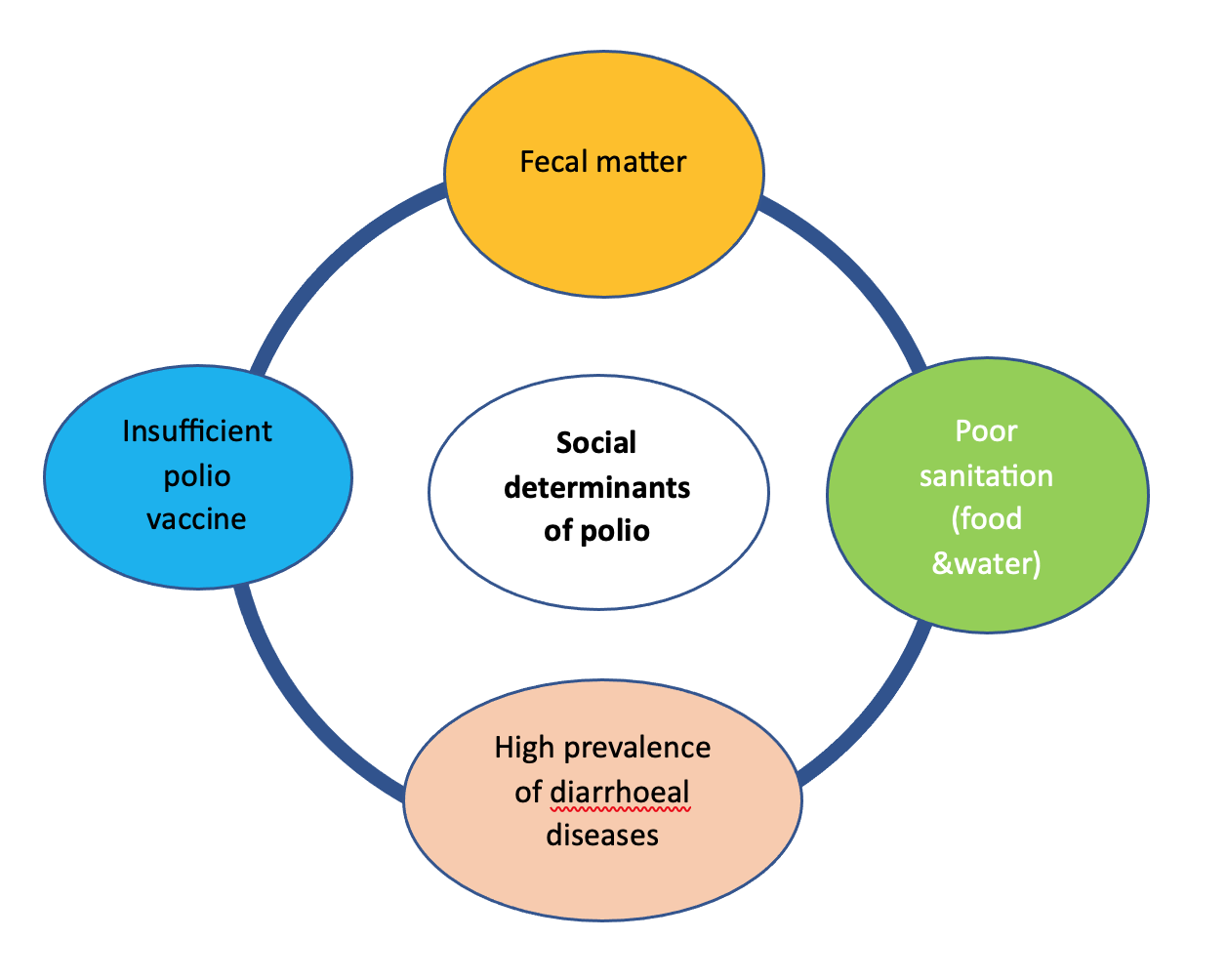Epidemiology and Communicable Diseases Polio: Causes, Symptoms, Mode of Transmission, Complications, Treatment, and The Demographic Of Interest
Polio, also known as poliomyelitis, is a highly contagious disease that paralyzes the body and leads to disability or death. According to the World Health Organization [WHO] (2023), poliovirus is the agent that causes polio. It predominantly affects children below five years of age. Also, it can affect adults who have never been vaccinated.
The Centers for Diseases Control and Prevention [CDC] (CDC, 2022) observes that the infected individuals show no apparent symptoms in most cases. However, 1 in 4 people infected with polio have symptoms such as sore throat, tiredness, fever, headache, stomach pain, and nausea. These symptoms last up to 5 days and disappear on their own.
Polio is transmitted through the direct movement of poliovirus from an infected host to a susceptible host. This can be through feces or, less often, contaminated food and water. The virus multiplies in the intestines. It then attacks the nervous system causing paralysis. The CDC (2023, para. 3) reports that a minority of those with polio infection can develop more severe symptoms, including meningitis and paralysis.
There is no cure for polio. However, prevention and eradication can be achieved through effective public health responses. The best approach to this is through vaccination which helps the host to fight the disease. While polio has one agent that invades a susceptible host, the environment has many factors that should be addressed if the world is to eradicate this disease. For example, polio vaccines should be readily available to infected people. There should be an effort to eliminate myths and misconceptions about polio vaccines which reduce the administration of the vaccine.
In terms of morbidity and mortality, the WHO (2022) reports that 1 out of 200 polio infections leads to permanent paralysis. Out of those who become paralyzed, 5 to 10% die due to crippled respiratory muscles. In addition, wild poliovirus cases have significantly reduced by up to 99% from approximately 350,000 cases in 1988 to only six reported cases as of 2021.
Polio: Reportable Disease
Polio is a highly contagious disease. According to the CDC (2020), paralytic polio case notifications are immediate and extremely urgent. Thus, at the local and state levels, health departments should contact the CDC Emergency Operations Centre within 4 hours to notify the CDC of suspected polio infection. An event code should be sent to 10410 through the National Notifiable Disease Surveillance System (NNDSS). NNDSS monitors, controls, and averts the occurrence and escalation of reportable and notifiable contagious diseases. The CDC (2020) categorizes nonparalytic polio reports as immediately notifiable and urgent. Notification for this should be sent to CDC within 24 hours. The Emergency Operations Center at the CDC (770-488-7100) provides consultation on collecting relevant clinical specimens to be used in virus isolation and subsequent serology.
Social Determinants of Health Impacting Polio
The Office of Disease Prevention and Health Promotion (2020) defines social determinants of health as the circumstances that contribute to or impede the well-being of an individual. Green (2018) asserts that the social determinants of polio include the place of birth, age, living conditions, play, learning environment, worship, and work. The author asserts that health disparities arise due to economic, social, and environmental drawbacks. As such, factors like poor sanitation, contaminated food and water, and healthcare inaccessibility are some of the social determinants that increase the risk of polio. These factors are shown in the diagram below.

Social determinants of polio
Polio Epidemiologic Triangle
In epidemiology, diseases do not occur in a population at random. Some individuals in a population are often more susceptible to infection than others because risk factors may not be randomly distributed. The epidemiologic triangle for polio is a causation model that depicts the components needed for the disease to occur. According to the CDC (2020), polio disease arises when there is an interaction between an agent (in this case, a poliovirus), the susceptible host (human being), and a conducive environment that allows transmission of the agent such as feces and inaccessibility to the polio vaccine.
